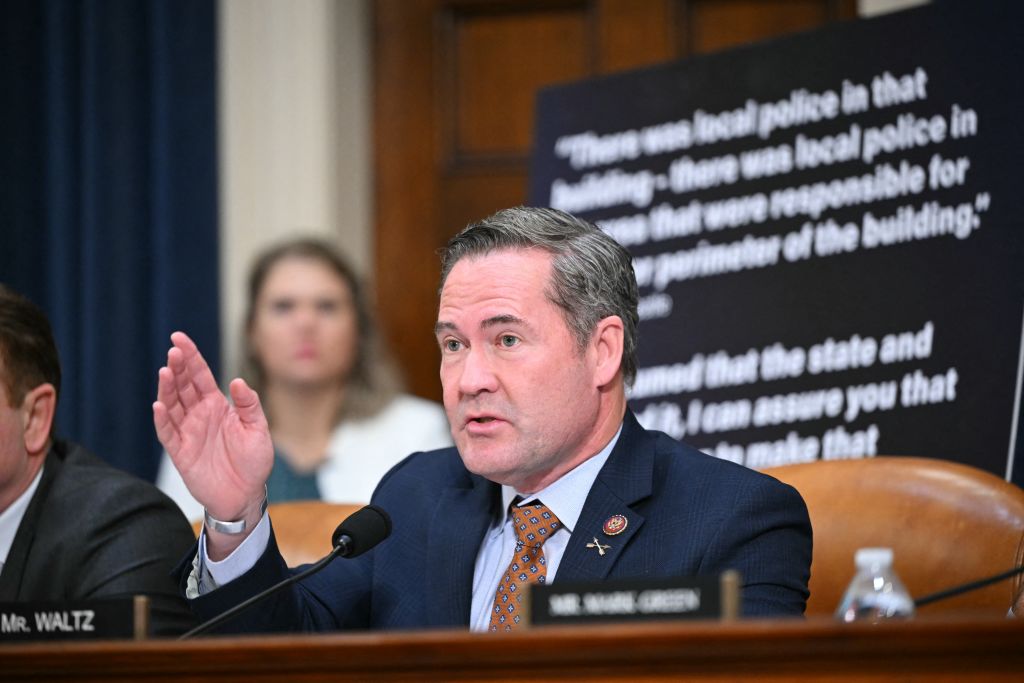The United States Congress is divided on pretty much everything these days. But there is one agenda item that traditionally brings lawmakers together: the defense budget. Usually Pentagon funding amounts to a pro-forma love-fest with a result — higher military spending — that is basically baked in. The defense budgeting process is usually like a boring movie, where the conclusion is foreseen about 10 minutes into the flick.
Last week, the House of Representatives passed its own version of the National Defense Authorization Act by a resounding 316-113 vote. It’s a mammoth 1,362-page bill that piled an additional $25 billion onto what President Joe Biden had submitted in his own $753 billion budget request. Amendments by members to either cut the defense budget by 10 percent or bring the numbers into line with Biden’s original request were stricken down.
The House vote comes several months after the Senate Armed Services Committee easily passed its own iteration of the defense policy bill, complete with an additional $25 billion to buy more F-35s, F-15s, combat vehicles and another Arleigh Burke-class destroyer. While the full Senate still needs to pass the bill and certain items are likely to be negotiated away when the two chambers go into conference committee, the top line is likely to reach a whopping $779 billion.
When all is said and done, the US will spend more on defense today than when it was fighting the Korean and Vietnam wars.
The question, of course, is why. Logic would suggest that if the era of endless wars is supposedly over, as the Biden administration proclaims (there are strong reasons to doubt that, of course), then defense spending should be going down, not up. While responsible competition with China certainly requires resources, particularly for the US Navy, this only partly explains why military spending continues to increase at a steady clip.
The fundamental reason for this phenomenon (outside of lawmakers in military-friendly districts who want to keep as many military-related jobs as possible) is the near-total absence within the US foreign policy community of a discussion about strategy. Plausible alternatives to a grand strategy of primacy, which by its very definition entails American dominance in all domains and in every region of the world, are frequently dismissed by the powers-that-be as insufficient, dangerous, or, more disingenuous still, an invitation to Chinese expansionism.
The de facto alternative is simply to continue what Washington has been doing since the dissolution of the Soviet Union nearly 30 years ago. Yet to state the obvious, the global landscape has changed significantly since then. The US, in effect, is partying like its 1993.
This is most evident in America’s force posture worldwide, much of which can be accurately categorized as a collection of post-Cold War legacy deployments. While the U.S. troop presence in Europe has gone down appreciably, Washington still retains approximately 70,000 to 80,000 troops on a continent that is extraordinarily wealthy (at more than $15 trillion, the European Union’s GDP rivals China’s), has adequate troop numbers of its own, and whose one core rival, Russia, is more competent at hacking computer networks than at feeding its own people.
Despite the Biden administration’s contention that US combat troops will be leaving Iraq by the end of the year, tens of thousands of forces remain stationed in the Middle East, spread out over multiple large facilities in multiple countries, where they are basically being used to implement a policy promulgated by Jimmy Carter during the time of the Shah. Protecting the region’s crude oil reserves, however, isn’t merely an American responsibility, particularly when the US itself is has decreased its crude imports from the Persian Gulf by 58 percent over the last 10 years. And while oil price shocks will remain a concern for as long as oil continues to power the global marketplace, those kinds of shocks historically are relatively short-term.
None of this is a surprise. After all, producers like Saudi Arabia, Iraq, and Kuwait need to sell their oil in order to finance their own budgets and keep the peace within their own territories. As the Atlantic Council’s Christopher Preble and Robert Manning astutely observe, ‘The core assumptions underpinning US policy [in the Middle East]…have been upended by new realities.’
In an ideal world, strategy drives budgets. Yet in today’s Washington, it often feels like budgets and old presumptions are driving the strategy. It’s a habit becoming more ingrained inside the Beltway by the day. And the longer it continues, the more likely the US will strain its resources and overextend itself, creating more problems over the long term.

























